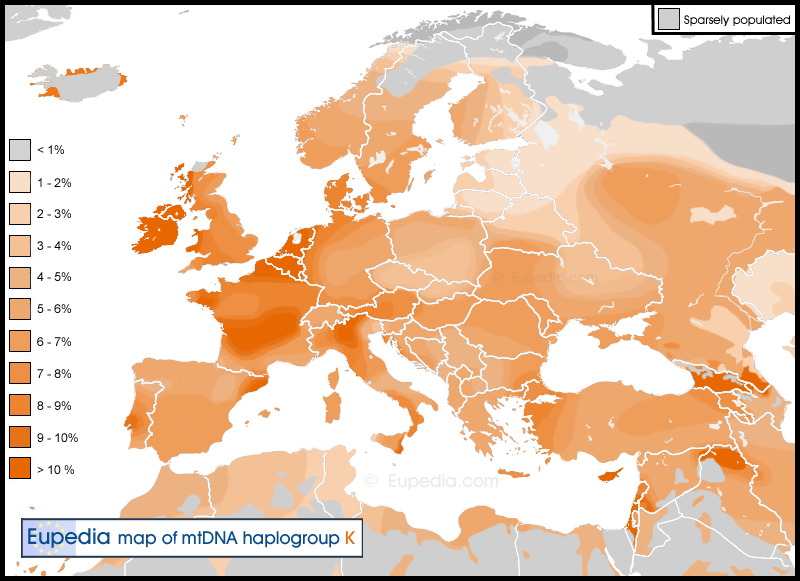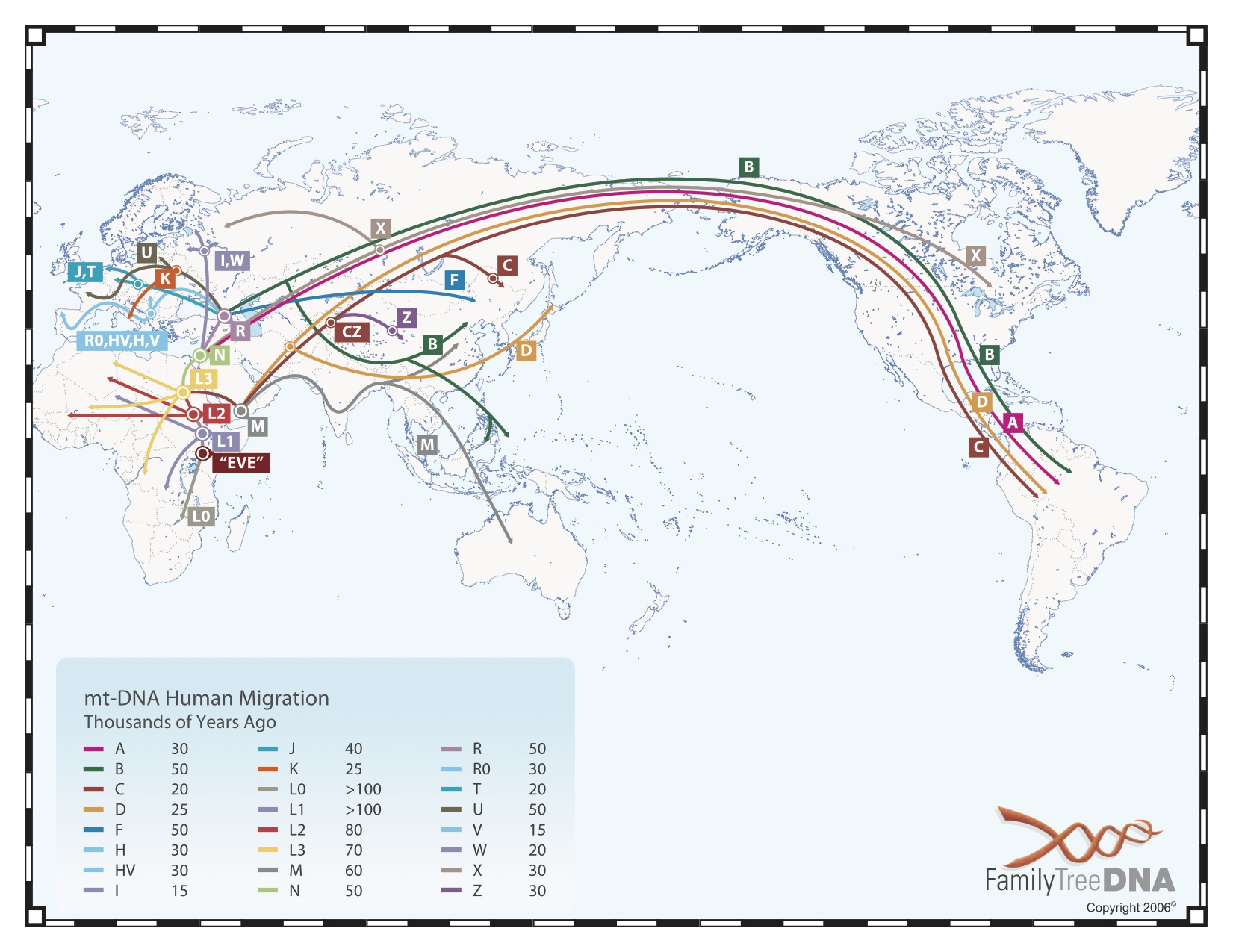
This week , my cousin Gary Barlow makes his second appearance as a guest blogger here. Although I am not related to Lydia Barlow, except distantly by marriage, this is a powerful tale of love that has gone off course. Gary brings us the opportunity to hear Lydia’s story in her own words. (Lydia’s maiden name is unconfirmed, although some speculate it may have been Bryant.)
Lydia Barlow – Love, Sacrifice, Outrage and Courage
By Gary Barlow
Up to Sept. 11, 1827, Lydia Barlow’s life hadn’t been that much different than the lives of many of the women whose families settled the Piney Woods of southern Mississippi. Born in North Carolina in 1770, Lydia trekked westward with her husband, John Barlow, and their children, stopping first in Georgia for several years, then being among the first families to move into southern Mississippi when it opened for white settlement in 1810-11.
They had raised 10 children along the way and gone from relative poverty to prosperous landowners. When residents in Greene County, Miss., petitioned the territorial governor in 1813 to appoint its first set of county officers, John Barlow was selected as constable of one district, and when Perry County was split off from Greene County in 1816, John was again selected as constable. Tax records show that by 1822 John owned 523 acres along the Leaf River, one lot in the town of Augusta, the county seat, and 20 slaves.
By 1827, John’s holdings had greatly increased, as tax rolls that year showed that he owned 1,484 acres and 19 slaves. If he wasn’t the richest man in the county, it was a close race between him and one other landowner. By all measurements of wealth, he and Lydia had survived the hardships of carving out a homestead and life in the southern wilderness and successfully raising a family. Seven of their children were married, and most owned substantial property themselves, though, perhaps tellingly, none lived closer than 15 miles to John and Lydia. Some had moved more than 90 miles away.
But on Sept. 11, 1827, Lydia made an almost unheard of move, one that no doubt quickly became the talk of the county. She filed for divorce and alimony against John. She was 57 years old; he was 62.
“(D)uring the greater part of the many years your Oratrix has been the wife of the said John, not withstanding the affection, attention, industry, and economy of your Oratrix, yet the said John would hardly allow her the bare necessities, much less the comforts of life,” Lydia said in her complaint to the chancery court. “Yet your Oratrix submitted thereto without a murmur.”
Lydia detailed the life she had helped build with John.
“(A)bout the year AD 1789, your Oratrix intermarried with one John Barlow, her present husband and to whom she has born children, ten of whom are now living, seven of which are married,” Lydia said. “That your Oratrix has always conducted as an Orderly, industrious, careful and obedient wife to her said husband. That when she intermarried with the said John the said John was very poor, not being worth the sum of one hundred dollars, that the said John is now the owner of about twenty slaves, the most of which are young and likely, that he is also possessor of large and valuable tracts of land, breeds much stock in horses, cattle, sheep, goats, hogs, etc.”
Lydia declared proudly that the increase in John Barlow’s fortune was not by his sweat alone.
“(Y)our Oratrix would further represent unto your honor, that she your Oratrix hath ever been during her said marriage, instrumental in not only taking care of whatever belonged to her said husband but also in earning the substance which he hath accumulated,” Lydia said. “That year after year she not only done and performed with her own hands the labor of ordinary housework necessary for a female and poor family, but that she also assisted and then not a little in cultivating and gathering the crops of the said John.”
In addition to performing those duties, Lydia said she’d also earned a great deal of money on her own, all of which was turned over to John. Then, in describing what John had done with that money, she added a crucial detail that likely explains how their marriage slowly turned from a partnership built on trust and hard work to one rife with discord and disdain.
Lydia alleged, “That for many years she had been esteemed and respected as a midwife for which services alone and by her performed, she hath received very considerable sums of money, not one dollar of which was used by your Oratrix, ever expended for her own private use or benefit but on the contrary, was always strictly required by the said John to be laid up and used by him either to pay some debt already contracted or to assist in adding another Negro to the stock already on hand, which indeed seems for many years to have engaged both the entire attention and affection of the said John.”
What Lydia was alleging was that John had become addicted to what had become an often lucrative and highly speculative business in the Deep South, the buying and selling of slaves. Her cryptic characterization of John’s interest in that hints that it had poisoned their relationship. Just how much it had done so was revealed in the next paragraph of Lydia’s complaint.
“Yet so it is may it please your honor that the said John regardless of all solemn duties as a husband has for more than a year last part abandoned the bed of your Oratrix and hath taken to himself one of the female slaves of the said John with whom he resides and lives at a distance of about four miles from the dwelling house of the said John,” Lydia said. “That not content with this outrage upon your Oratrix as well as upon society he has kept your Oratrix of almost all and every article either for sustenance, labor, or comfort — having taken the very bedding and covering with a scanty exception, wheels, cards, loom etc. etc. and leaving your Oratrix with her young daughter destitute of meat, sugar, coffee, and indeed of almost every thing.”
The final straw had come when Lydia went to confront John, it seems, found him in the very act of adultery, and then was violently attacked by John.
“(Y)our Oratrix would further represent unto your honor that your Oratrix some time in June last had the painful misfortune detecting the said John, now a man of upward of sixty years of age, in the very act of adultery with the said slave, with whom the said John in a most brutal and violent manner beat and abused your Oratrix,” Lydia alleged.
Lydia closed by pleading for the court to award her “such order and decree as to your honor shall seem right and agreeable to equity and good conscience.”
“(Y)our Oratrix is now nearly sixty years of age, that having labored hard all her life and that she is now infirm and that from the treatment exercised toward her by her husband the said John that she has nothing but poverty and old age awaiting her through the close of life,” Lydia said.
I found Lydia’s original handwritten complaint in an old box of court papers in the Mississippi Department of Archives in Jackson, along with a warrant that was immediately issued by the chancery judge, at Lydia’s request, ordering the Perry County Sheriff to require John to post $2,000 bail, a very considerable sum in those days, in order to prevent him from fleeing the state. I’m still not sure why the documents had ended up in Jackson, though I suspect it had something to do with Mississpi’s requirements for a woman to win a final divorce decree in 1827. The Perry County courthouse burned in the early 1870s, so any further records of the divorce that might have been there would have been destroyed.
So while there’s no case record of whether or not Lydia won, tax records show that she did. In 1828, Perry County tax rolls show Lydia owning a 160-acre farm in her own name some 15 miles away from the property John still owned. Those same tax rolls show that John’s property was down to 780 acres, barely more than half what he owned in 1827, before the divorce complaint was filed. Clearly, circumstances had changed for both Lydia and John.
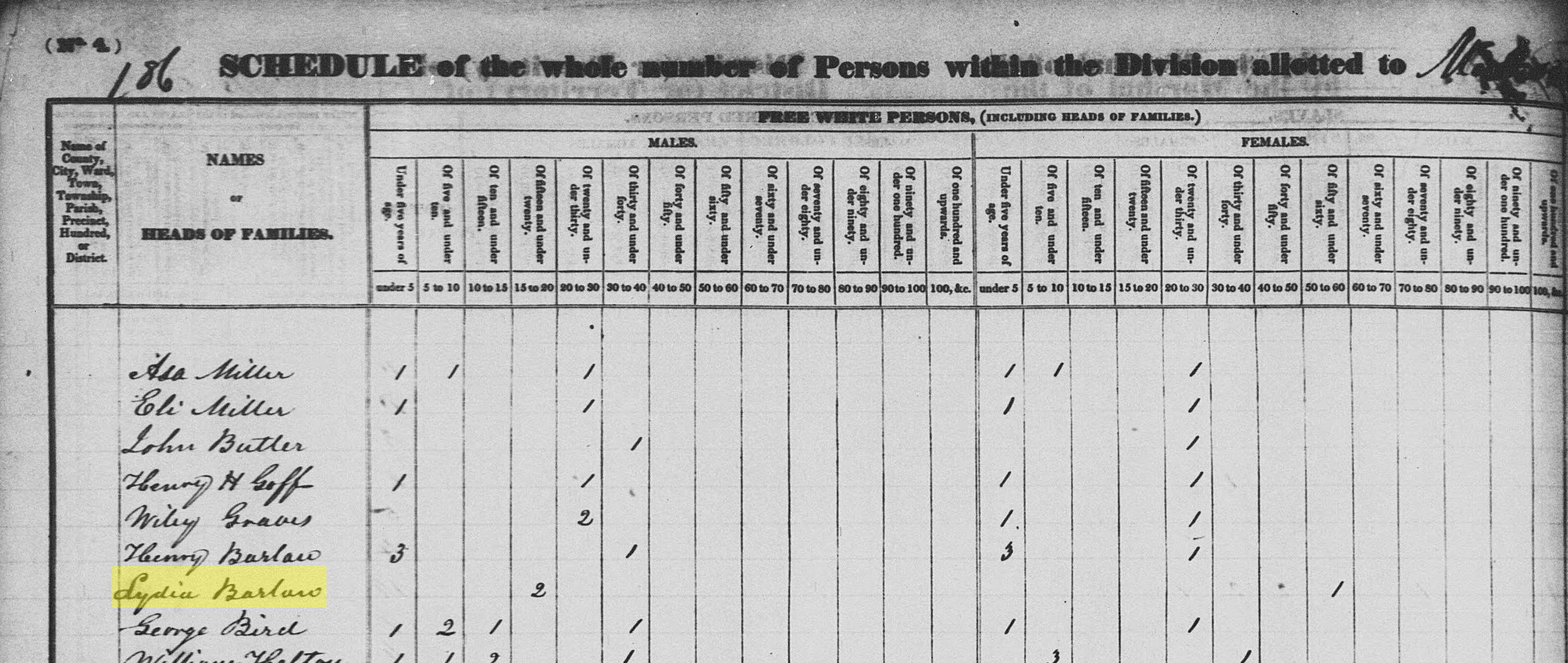
Evidence of Lydia Barlow in the 1830 census
The court papers likely ended up in Jackson, the state capital, as Lydia went from winning her case in chancery court to pursuing the final step to obtain a divorce. In that era, under the Mississippi Constitution, for a woman to win a divorce (but not a man), she not only had to win in court, she then had to petition the Mississippi Legislature to approve the court’s decision. It was an arduous process that took considerable time and effort. Mississippi legislators approved only seven divorces in 1828 and just three in 1829. I searched the legislative records but found no evidence that Lydia made it that far.
However, that her court files were in Jackson is evidence that she and her lawyer were working to that end when, unexpectedly, John’s sudden death made it a moot point. On Sept. 12, 1829, John died in Natchez, the victim of a yellow fever epidemic that swept through the city that fall.
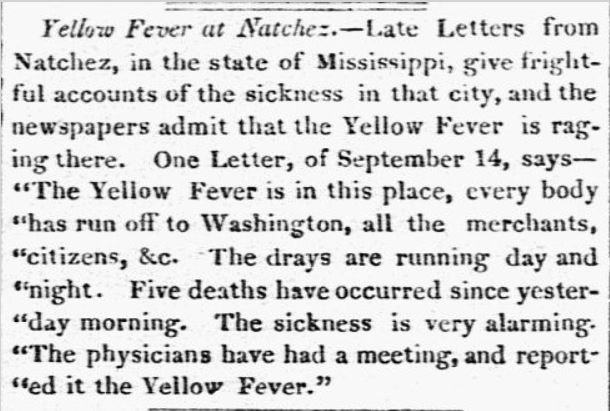
Date: Tuesday, October 13, 1829 ; Paper: Baltimore Patriot (Baltimore, MD) ; Volume: XXXIV , Issue: 90 , Page: 2
Natchez was some 150 miles away from where John lived in Perry County. It was also the center of the slave trade in the Deep South at that time. John, no doubt still driven by his desire to capitalize on that immoral but lucrative business, had picked the wrong time to go to Natchez.
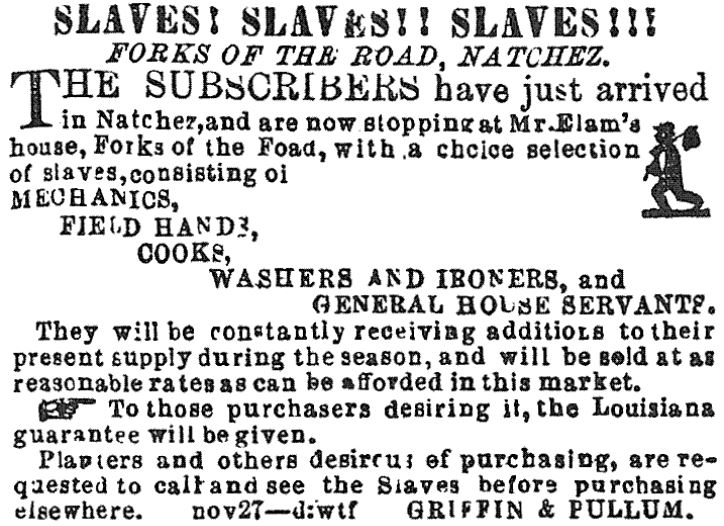
John may have responded to an advertisement like this for the Forks of the Road Slave Market in Natchez
Lydia subsequently sold her 160 acres in Perry County and moved to Simpson County, about 60 miles north, where two of her sons owned successful farms. There she lived out her life, in relative peace it seems, dying around 1846.
Lydia was my great-great-great-great-grandmother. We’ve yet to figure out her maiden name. But I have seen the difficult wagon trail she took with her family through Georgia and Alabama to travel to a new and unknown wilderness home in Mississippi. There, she and John started again with nothing. There can be no question that she was a strong, persevering woman, that she worked hard and long to give her children every advantage. Almost all of them named daughters after her.
To me, though, she was a pioneer in more ways than one. In an age and in a place in which divorce was considered a heinous sin, regardless of the reason, when women were taught to be subservient to their husbands no matter what, when few women dared challenge the status quo, Lydia drew a line in the sand and asserted her right to be treated fairly. She no doubt had other options. Her children and friends probably urged her to just move away from John and live with one of her adult children’s families, who certainly would have welcomed her. But Lydia defied convention, took a stand, and won.
In her later years, I imagine Lydia sitting on her porch and looking out over the land she had helped recreate with a sense of peace and satisfaction. It was a peace she greatly deserved, and I trust that as she reflected on her life, she was secure in the knowledge that she had lived it on her terms, with her dignity intact and her courage as a badge of quiet honor. In my eyes, she stands to this day as a truly heroic figure in my family tree.
*****
Gary Barlow is a journalist, paralegal, and amateur genealogist who lives in Chicago. Other passions include cooking, history, music of all kinds, the White Sox, Arsenal F.C., and British TV murder mysteries. Gary’s previous blog contribution to My Search for the Past was “Betty Jane Gaa – A Fresh Start for Betty – 52 Ancestors 2015 #1.”

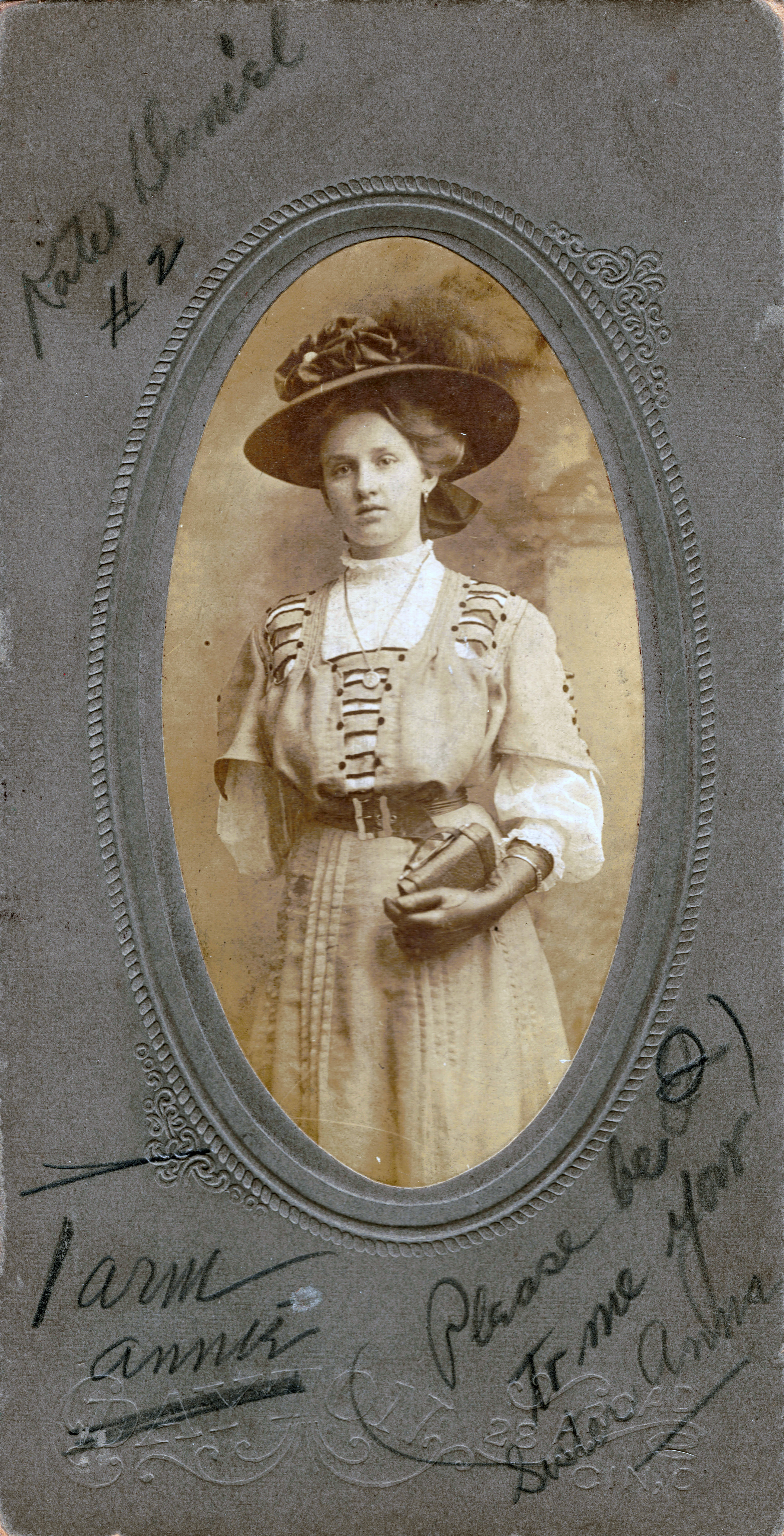


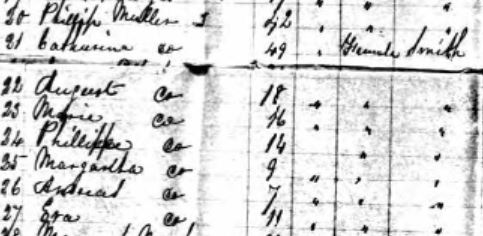
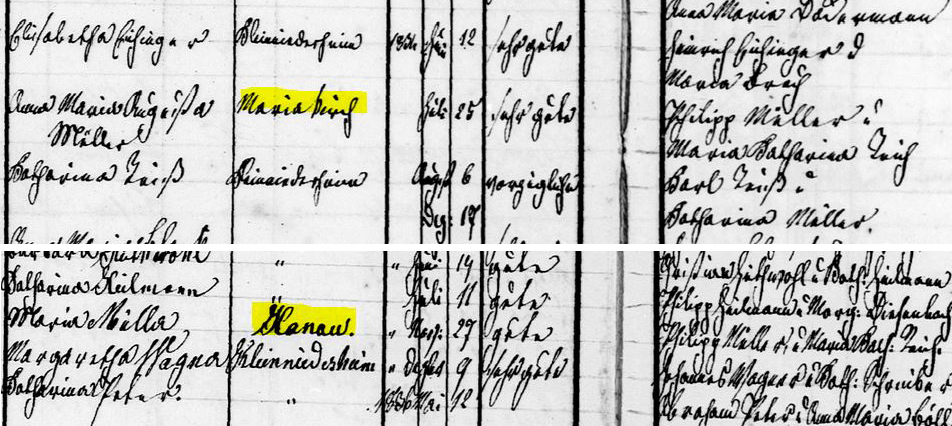
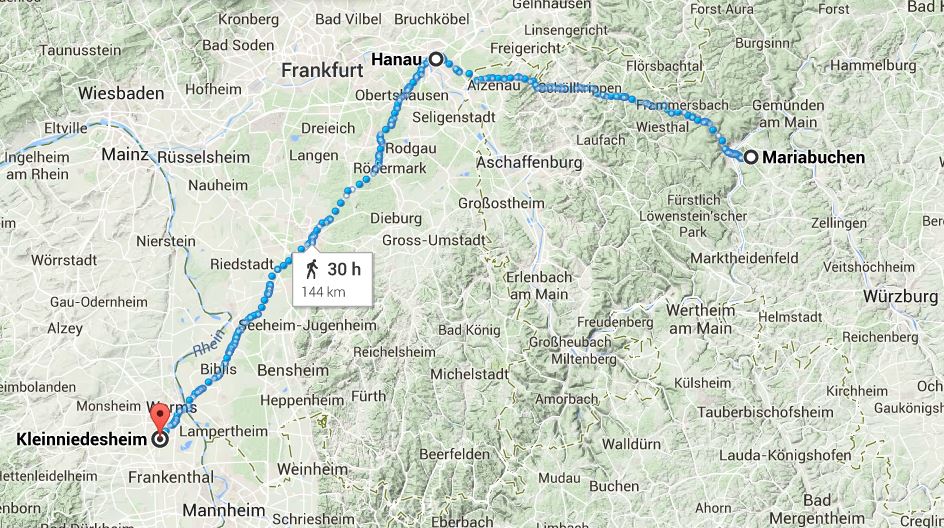
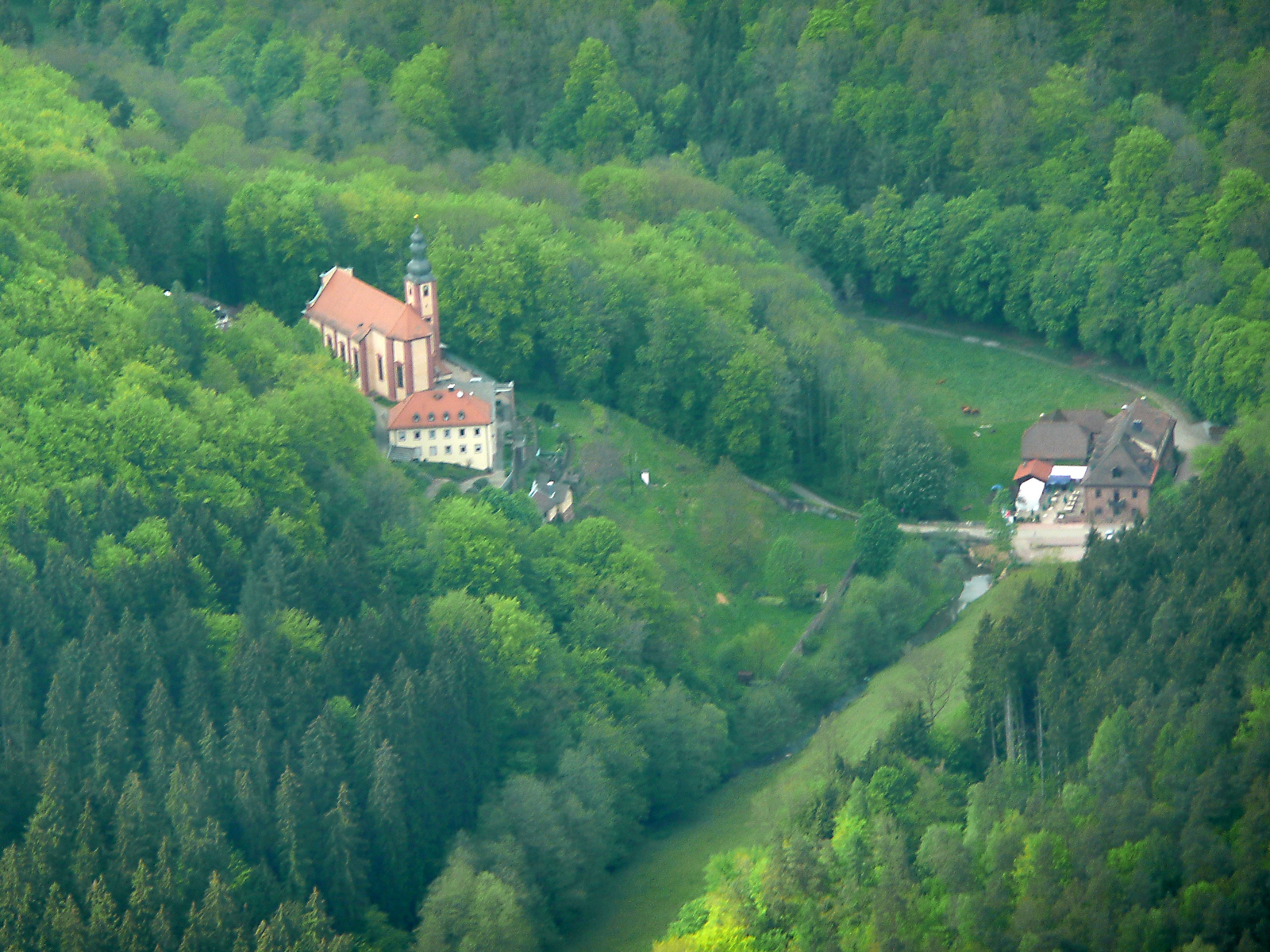
















![Description Description : Piece 1116: Monthly Meeting of Settle (1652-1775) Source Information Ancestry.com. England & Wales, Quaker Birth, Marriage, and Death Registers, 1578-1837 [database on-line]. Provo, UT, USA: Ancestry.com Operations, Inc., 2013. Original data: General Register Office: Society of Friends' Registers, Notes and Certificates of Births, Marriages and Burials. Records of the General Register Office, Government Social Survey Department, and Office of Population Censuses and Surveys, RG 6. The National Archives, Kew, Richmond, Surrey, England.](https://mysearchforthepast.files.wordpress.com/2015/03/thomas-walsmsley-eliz-rudd-marriage.jpg?w=300)











